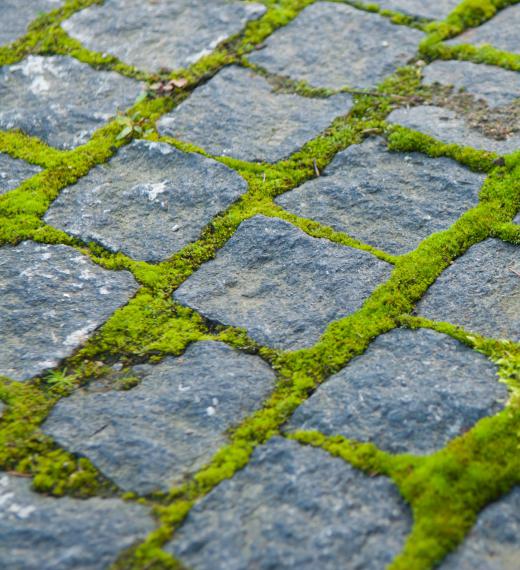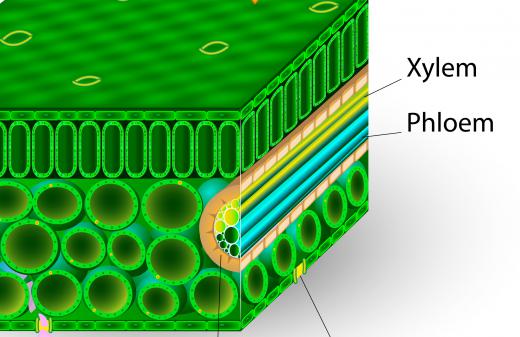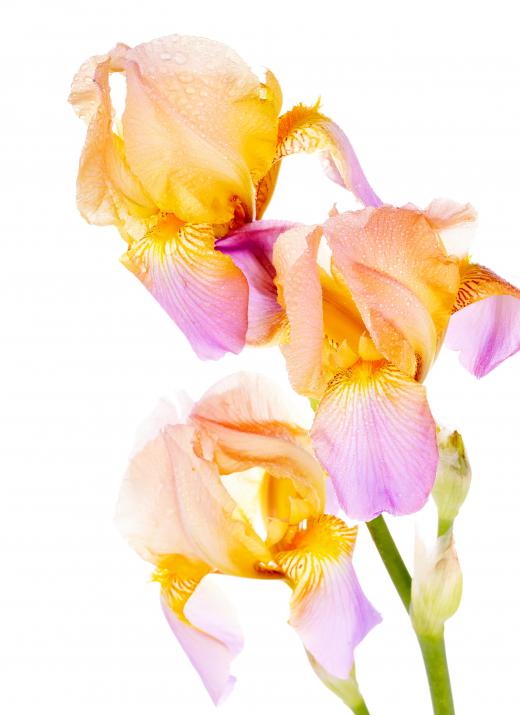What is a Rhizoid?
A rhizoid, with a name derived from the Latin prefix rhizo- for “root,” actually is not a root. Rhizoids are short, thin filaments that anchor certain types of plants and absorb water and nutrients from the plants’ environment. Rhizoids, while not technically a root, act as a root system for plants that lack a traditional root system.
A true plant root is vascular. It has hollow tubes for the conveyance of water and nutrients to the various parts of a plant, such as its leaves, where they are metabolized for growth. The xylem carries the water, and the phloem carries nutrients.

In many microscopic fungi and algae, a rhizoid can be unicellular — a single, elongated plant cell. Even most multicellular rhizoids are relatively undifferentiated single cells connected end to end. The cellular membranes are porous so water and nutrients can pass from cell to adjacent cell.
The function of rhizoids is to be the root system for bryophytes — plants without vascular tissue, such as mosses and liverworts. Like a tangled mass of silken white hair, the rhizoids can tie a plant to its substrate, whether it be soil, solid rock, or other material in which it grows. Likewise, the greatly increased surface area of many strands of hair efficiently soaks up water and dissolved minerals.

Liverwort rhizoids are very long single-celled structures. Moss rhizoids are multicellular, and some moss species can have a deep and extensively branched rhizoidal system. A rhizoid of most mosses cannot directly absorb water. Rather, it transports water by surface capillary action. Some fungal rhizoids secrete digestive enzymes to absorb the resulting organic material of its host.

Rhizoids are also crucial to a class of vascular plants without seeds, such as ferns, during the gametophyte stage, when their reproductive cells have a single set of genetic chromosomes. The young plant survives, thanks to its rhizoids, until a fertilized egg begins developing a vascular system that includes true roots. It then enters its sporophyte stage, when the reproductive cells contain a complete set of chromosomes within spores that are released into the wind. Moss also propagates asexually during its sporophyte stage. Ferns and mosses have only one parent.
Rhizoids support primitive plants and are not to be found in most vascular plants that reproduce sexually, so it is widely believed that a rhizoid is the early evolution of a plant root. Algae and other plants in a liquid medium may have developed specialized cells dedicated to absorbing water and nutrients, while other cells developed to dedicate themselves to absorbing sunlight. Terrestrial life became the next logical step. The whisk fern, which resembles fossilized plants of the ancient Cambrian period of earth, has a vascular system but no roots or leaves — only rhizoids — to sustain it.
The term rhizoid is sometimes loosely used to define “root hairs,” the singular strands that are extensions of special, hair-forming cells on the outer layer of a vascular plant’s roots. Both are trichomes, any hairlike fine appendage or outgrowth of a plant. Both also have nearly the same functions.
A rhizoid is not to be confused with a rhizome. Rhizomes, also called rootstocks, are nodes along the underground stem of certain plants from which a new root system and stem shoot can originate. Irises are an example of plants that can propagate with rhizomes.
The term "rhizoid” also has other meanings in scientific usage. It has come to describe any filamentous rootlike structure with fractal branching such as the way some colonies of bacteria grow. It has also been used to describe structures of a cell or organism that enable it to anchor or adhere itself to its environment.
AS FEATURED ON:
AS FEATURED ON:













Discuss this Article
Post your comments